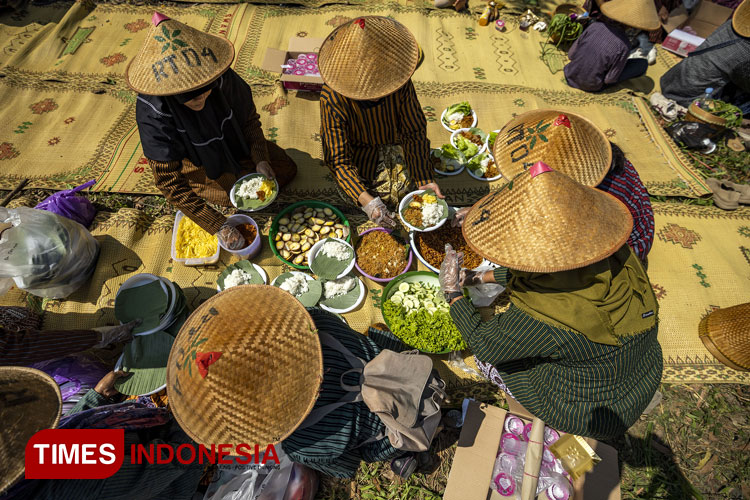Merti Umbul: A Tradition of Preserving Water Sources at the Slopes of Mount Merapi

TIMESINDONESIA, YOGYAKARTA – In the serene village of Boyong, nestled on the slopes of Mount Merapi in Yogyakarta the annual Merti Umbul ceremony is more than a ritual of gratitude, it is a poignant symbol of resilience and survival.
For the villagers, Merti Umbul is a moment to reflect on their tumultuous history, especially the devastating eruption of Merapi in 2010, which obliterated their homes and claimed the lives of many loved ones.
Advertisement
On November 27, 2010, the eruption of Mount Merapi wreaked havoc in Dusun Boyong. The deadly event, as recorded by the Indonesian National Board for Disaster Management (BNPB), resulted in 277 deaths in the Yogyakarta region alone, displacing tens of thousands and killing countless livestock.
The lava flows buried the vital water source of Boyong residents, the Kali Boyong, under a thick layer of volcanic ash and debris. The entire village, along with other settlements in Sleman Regency, was evacuated.
Reviving the Lifeline: The Creation of Umbul Boyong
Today, on July 27, 2024, the residents of Dusun Boyong gather to perform the Merti Umbul ceremony. This annual event serves to honor and preserve the water source located at the confluence of Kali Boyong and Tuk Candi.
From early morning, hundreds of villagers from Boyong, Wonorejo, and Tanen, dressed in traditional attire, congregate in Boyong's village square. Men wear sorjan and lurik with blangkon headgear, while women don kebaya lurik, kain, and selendang.
Supardi, a 64-year-old community leader, recounts the origins of Merti Umbul. Following the 2010 eruption, the villagers faced a dire water shortage as all local water sources were destroyed. Despite multiple attempts to find alternative sources, they found only a small spring at Umbul Candi, insufficient for the community's needs.
Determined, Supardi and other village elders decided to tap a new water source from the confluence of Kali Boyong and Tuk Candi. Their efforts bore fruit, and water began to flow from the new spring, now known as Umbul Boyong. "Alhamdulillah," Supardi reflects, "despite many obstacles, the water from Umbul Boyong still flows today."
Merti Umbul: A Celebration of Community and Sustainability
The Merti Umbul procession begins at 9 a.m., with villagers carrying tumpengs and other ceremonial items, accompanied by a drum band, on a joyful 2-kilometer journey to Umbul Boyong. Upon arrival, community leaders and villagers partake in a communal meal, or kenduri, and plant young banyan trees around the spring.
The ceremony concludes with a prayer led by the village's religious leader, followed by a communal feast where everyone shares the tumpengs. The event is enlivened by traditional Uyon-uyon songs performed by local musicians.
Supardi emphasizes the significance of Merti Umbul, "This is the result of our hard work for the community's needs. The water source at Umbul Boyong must be preserved and maintained, not only by Boyong residents but by everyone in the surrounding areas," he said.
Merti Umbul, therefore, stands as a testament to the villagers' collective efforts and a tribute to their forebears' perseverance. Today, the water from Umbul Boyong supports over 400 households in Boyong, Wonorejo, and parts of Tanen, ensuring that the legacy of resilience continues to flow abundantly. (*)
**) Ikuti berita terbaru TIMES Indonesia di Google News klik link ini dan jangan lupa di follow.
| Editor | : Khodijah Siti |
| Publisher | : Rizal Dani |

